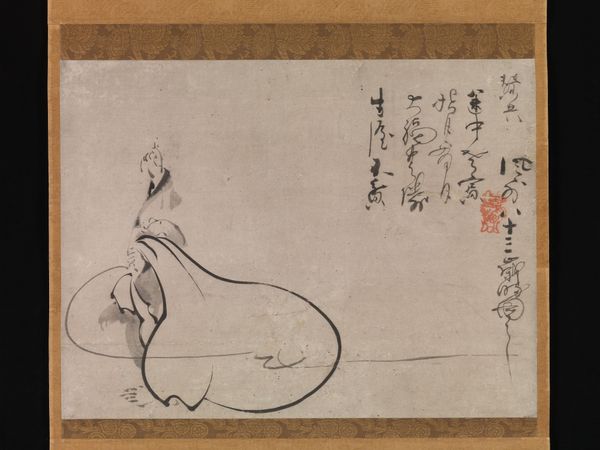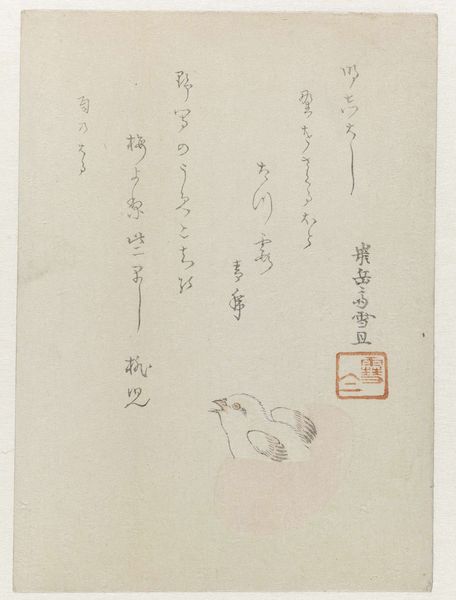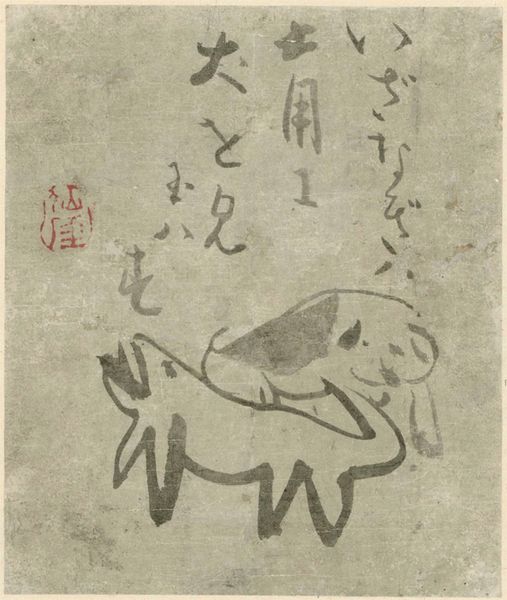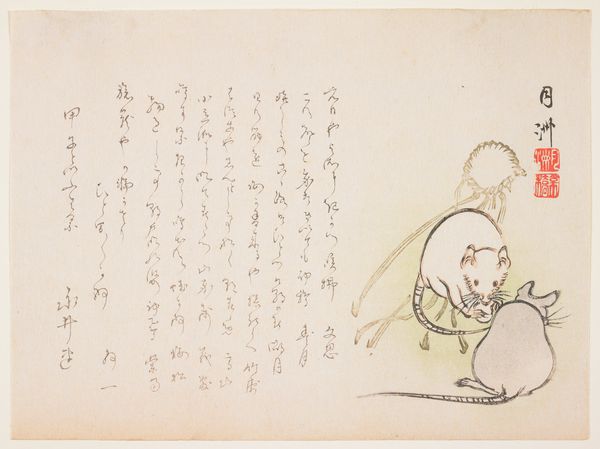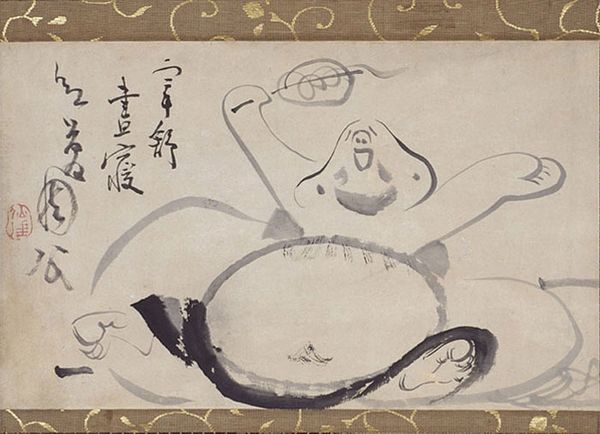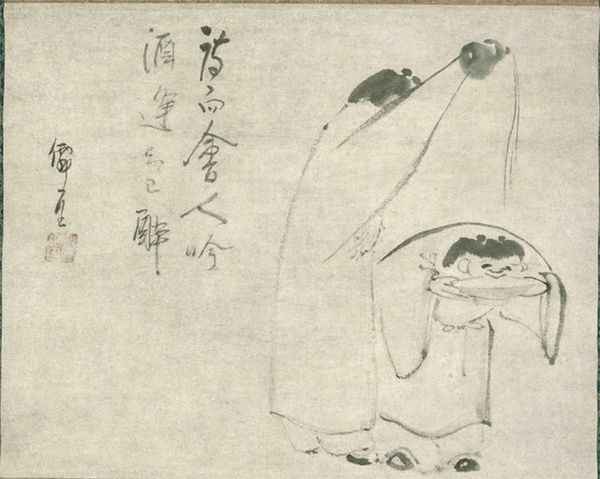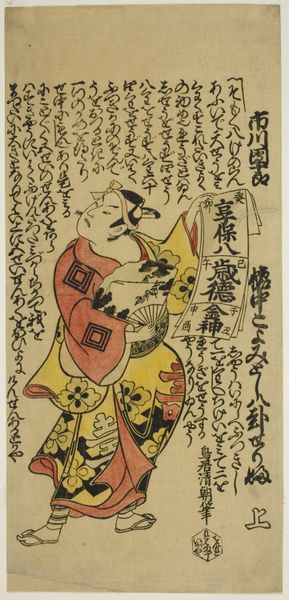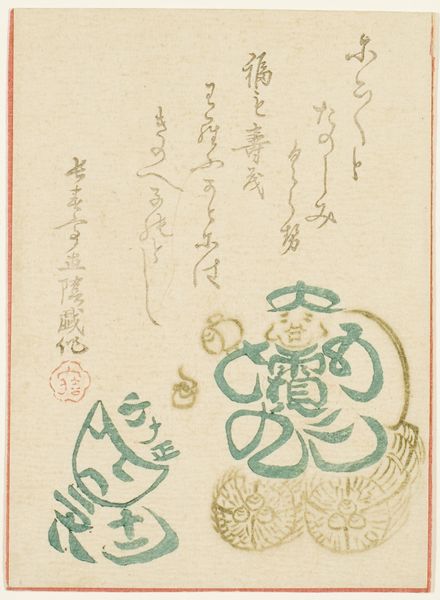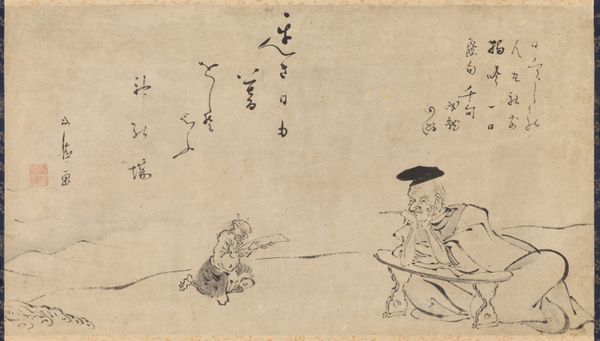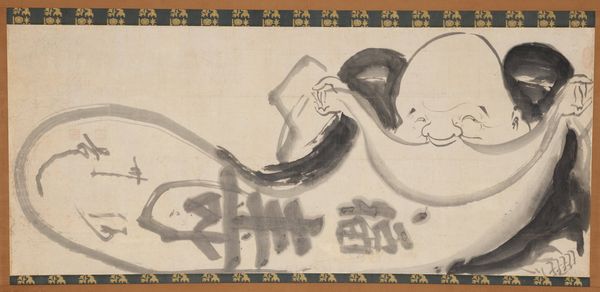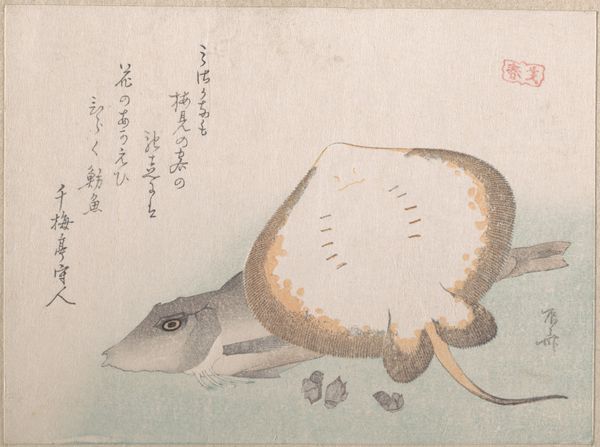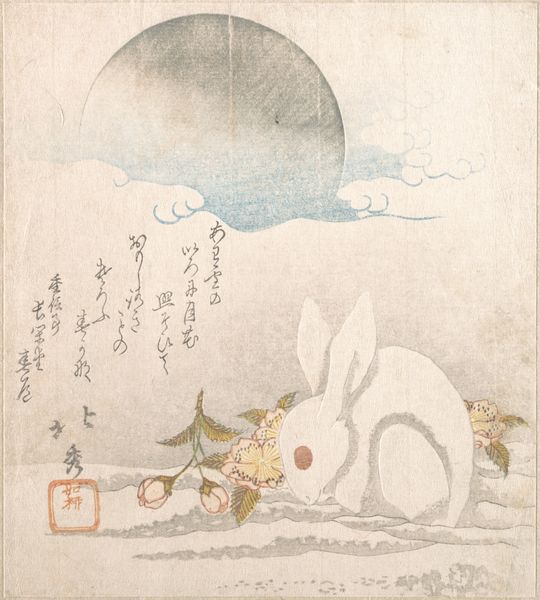
drawing, ink
#
portrait
#
drawing
#
imaginative character sketch
#
quirky sketch
#
pen sketch
#
asian-art
#
ukiyo-e
#
figuration
#
personal sketchbook
#
ink
#
idea generation sketch
#
sketchwork
#
pen-ink sketch
#
sketchbook drawing
#
sketchbook art
#
calligraphy
#
initial sketch
Copyright: Public domain
Editor: This untitled work, a drawing by Yosa Buson, presents a curious scene in ink. There’s a figure that appears almost like a…well, an egg with a face, and a cat, both rendered with such delicate lines. I'm struck by the overall sense of gentle humor and the integration of calligraphy. What do you see in this piece? Curator: It's tempting to see just whimsy, but Buson’s work operates within a specific historical and social context. Think about the Edo period in Japan, and the rising merchant class that embraced Ukiyo-e art. What role did art play in a society with strict social hierarchies? This “egg” figure, seemingly innocuous, could be a subtle commentary on social expectations, perhaps the artist critiquing conventional portraiture, gently poking fun at the rigid norms. Editor: I hadn’t thought about it as social commentary. So, the simplicity is intentional, perhaps even subversive? Curator: Precisely! And notice how the cat, a common motif in Japanese art, is depicted. How does Buson subvert the typical representations, especially considering the restrictive social expectations surrounding women at the time, often associated with domesticity, similar to the image of a cat? The expressive ink work, reminiscent of calligraphy, reinforces the artist’s personal voice in the artistic landscape, and how could it serve to emphasize Buson's message and reflect certain aspects of Japanese aesthetic culture and the historical conditions within which art production takes place? Editor: That makes me see the piece so differently! I was just focusing on the charming qualities, but understanding the context really enriches the experience. Curator: It’s through questioning and connecting these historical threads with contemporary lenses that we gain deeper insights. Art history is a constant dialogue, one where we question, challenge, and ultimately, re-interpret the artwork. Editor: This was so helpful. Thank you. Curator: The pleasure was all mine.
Comments
No comments
Be the first to comment and join the conversation on the ultimate creative platform.
